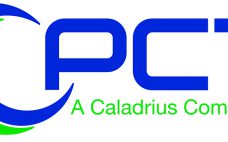The pathway from conception to regulatory approval and commercialization of a cell therapy is long, complex, and resource intensive. To help inform numerous decisions along the way, an effective commercial manufacturing strategy for a cell therapy should be built on the four principles of what PCT calls development by design (DbD): quality, cost of goods (COGs), scalability, and sustainability. Proactively implementing a DbD strategy does not force a cell therapy developer to make a large manufacturing investment early in a…
Author Archives: Brian Hampson
Factories of the Future: Can Patient-Specific Cell Therapies Get There from Here?
In many ways, patient-specific cell therapies (PSCTs) are still the “new kid on the block” in medicine. Researchers, therapeutic developers, manufacturers, regulators, and payers are still exploring and developing an understanding of the powerful benefits and unique challenges associated with this growing industry. As we all become more familiar with PSCTs, an evolution will need to occur — as it has for automobiles, computers, and every technological advance in human history — for these therapies to become widely adopted, cost-efficient,…
Mapping Success for Commercial Cell Therapy Manufacturing
Commercializing cell therapies can be much more challenging than commercializing traditional pharmaceuticals and biologics. Cell-based drug products are significantly more complex than protein or small-molecule drug products. Their mechanisms of action and product attributes are also more complex. Cell therapy product attributes rely heavily on the associated manufacturing processes. Process changes can influence products in ways that may not be discernible until their effects on efficacy effects become evident. Product characterization is critical, but cell therapy products are living organisms…
The Path to Commercial Cell Therapy Manufacturing: Developing a Strategic Roadmap
The road from conception to commercialization of a cell therapy is long, complex, and resource-intensive. To be successful, a cell therapy product must be manufactured to high quality standards using a robust, cost-effective process in a manner that will scale to meet demands and be sustainable over the commercial life of the product. Read the full text of this application note in the PDF (Login required).
Development By Design
Unlike typical pharmaceuticals, cell therapies rely heavily on the manufacturing process for product attributes. As more products move out of the clinic and toward commercialization, the manufacturers of cell therapies are realizing that commercialization is unlikely to be successful without an effective methodology for manufacturing development. At PCT, we recognize that a successful commercial manufacturing vision includes the ability to provide consistently high product quality at a reasonable cost of goods that meets demand over the commercial life of a…



